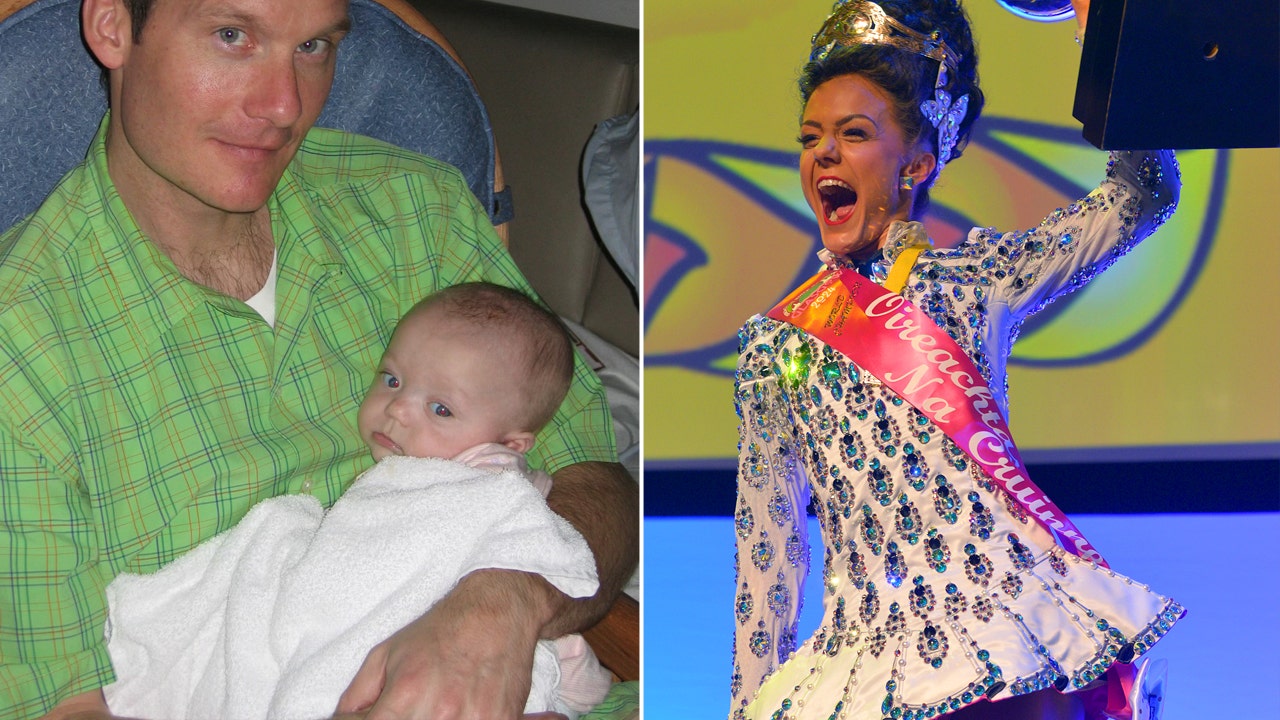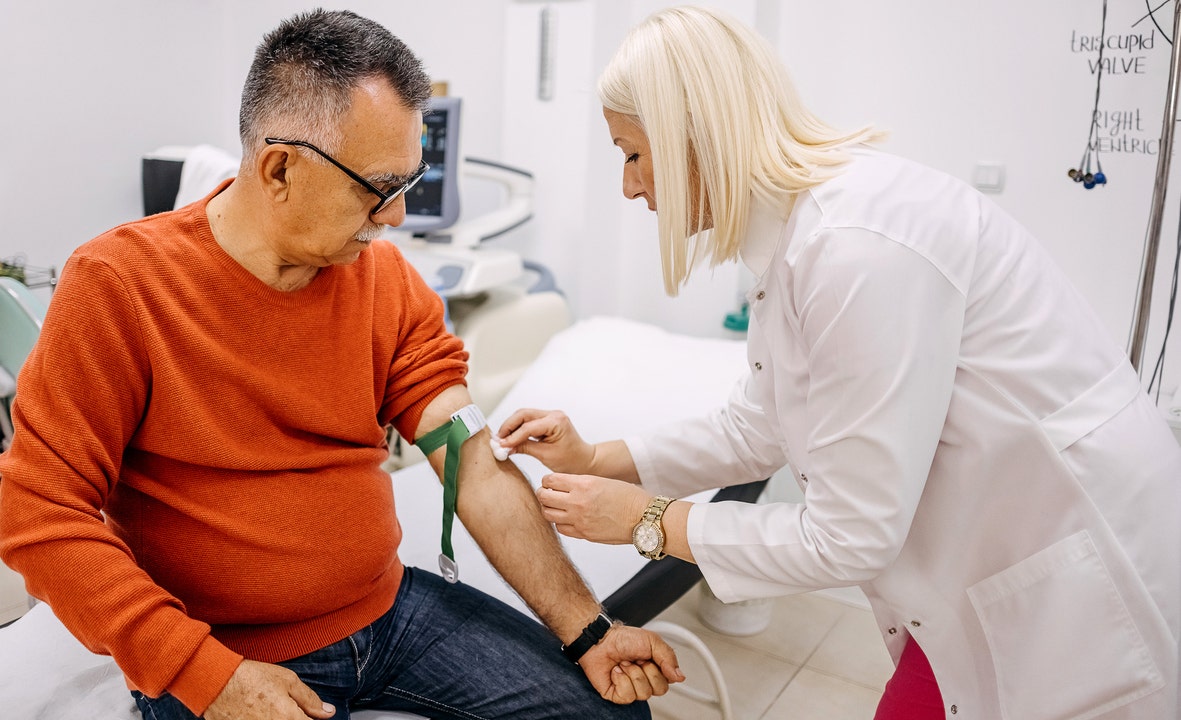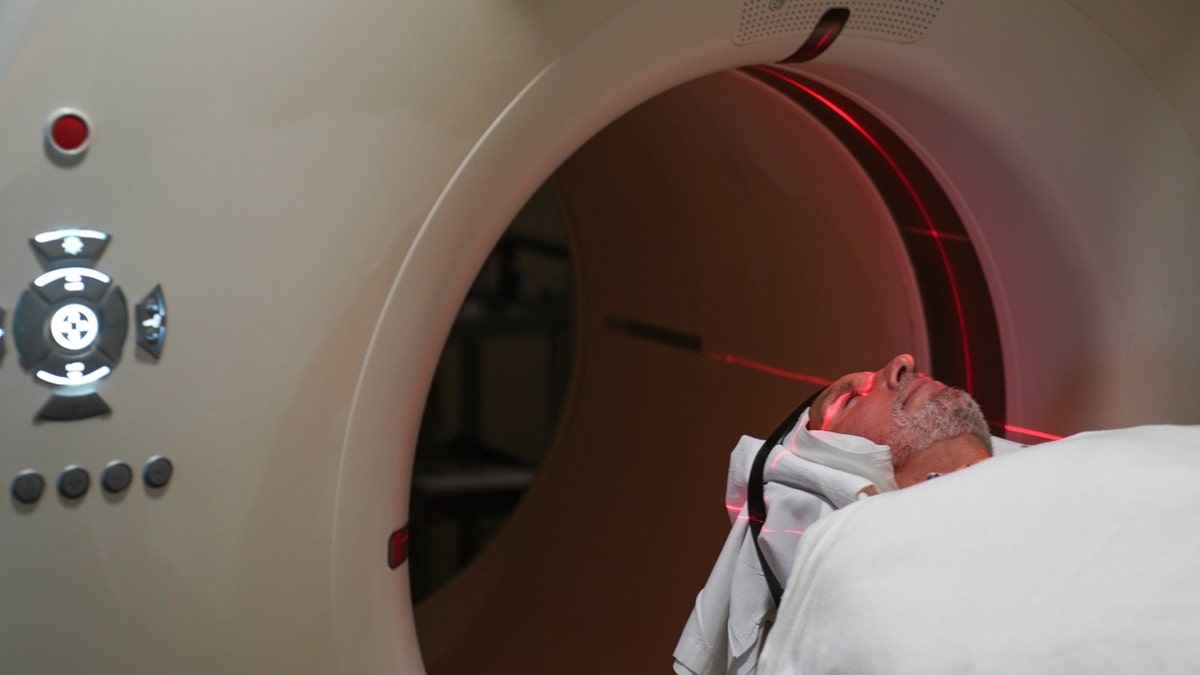Health
Why Do We Listen to Sad Songs?

In the second part of the experiment, involving 450 new subjects, the researchers gave each participant 72 descriptions of emotional songs, which expressed feelings including “contempt,” “narcissism,” “inspiration” and “lustfulness.” For comparison, they also gave participants prompts that described a conversational interaction in which someone expressed their feelings. (For example: “An acquaintance is talking to you about their week and expresses feelings of wistfulness.”) On the whole, the emotions that subjects felt were deeply rooted to “what music is all about” were also those that made people feel more connected to one another in conversation: love, joy, loneliness, sadness, ecstasy, calmness, sorrow.
Mario Attie-Picker, a philosopher at Loyola University Chicago who helped lead the research, found the results compelling. After considering the data, he proposed a relatively simple idea: Maybe we listen to music not for an emotional reaction — many subjects reported that sad music, albeit artistic, was not particularly enjoyable — but for the sense of connection to others. Applied to the paradox of sad music: Our love of the music is not a direct appreciation of sadness, it’s an appreciation of connection. Dr. Knobe and Dr. Venkatesan were quickly on board.
“I’m a believer already,” Dr. Eerola said when he was alerted to the study. In his own research, he has found that particularly empathetic people are more likely to be moved by unfamiliar sad music. “They’re willing to engage in this kind of fictional sadness that the music is bringing them,” he said. These people also display more significant hormonal changes in response to sad music.
But sad music is layered — it’s an onion — and this explanation prompts more questions. With whom are we connecting? The artist? Our past selves? An imaginary person? And how can sad music be “all about” anything? Doesn’t the power of art derive, in part, from its ability to transcend summary, to expand experience?
One by one, the researchers acknowledged the complexity of their subject, and the limitations of existing work. And then Dr. Attie-Picker offered a less philosophical argument for their results: “It just feels right,” he said.
Audio produced by Adrienne Hurst.

Health
Water safety tips from experts for families and caregivers as drowning deaths increase

As summer gets underway, a recent report sheds light on the importance of swimming and water safety strategies.
Each year, some 4,000 unintentional drowning deaths occur in the U.S., with the highest rates among children between 1 and 4 years of age, according to a report by the U.S. Centers for Disease Control and Prevention (CDC).
Drowning is the leading cause of death among children age 4 and under, and it is one of the three leading causes of death due to unintentional injury among those aged 5 to 34, the report said.
DROWNING PREVENTION: KEEP KIDS SAFE IN AND NEAR THE WATER WITH THESE TIPS
“With drownings on the rise across the U.S., especially among young children, it is more critical than ever to ensure that water safety is always top of mind,” Megan Ferraro, executive director of The ZAC Foundation.
It’s a Connecticut-based organization that develops educational programming and resources for swimmers of all ages and abilities, she wrote in an email to Fox News Digital.
Each year, some 4,000 unintentional drowning deaths occur in the U.S., with the highest rates among children between 1 and 4 years of age. (iStock)
The number of unintentional drowning deaths has risen in the years since the COVID pandemic, the report revealed.
Between 2020 and 2022, the increased drowning rates may have been caused by infrastructure disruptions, limited access to supervised swimming venues, and individuals spending more time in or near water, said the CDC.
BEACH SAFETY TIPS: WHAT TO DO IN A RIP CURRENT AND HOW TO STAY SAFE NEAR THE WATER
Despite these risks, more than half of U.S. adults have never taken a swimming lesson.
Heading into the thick of beach and pool season, several swim and water officials shared these eight water safety measures to prevent tragic drownings.
1. Choose swimsuit colors carefully
Some swim instructors suggest dressing children in bright-colored bathing suits and avoiding colors that blend with the surrounding water.

Some swim instructors suggest dressing children in bright-colored bathing suits and avoiding colors that blend with the surrounding water. (iStock)
Nikki Scarnati, a certified infant swimming resource instructor in Florida, used her TikTok platform to warn parents to avoid buying blue or pastel-colored bathing suits, which can make it difficult to spot children in the water.
In her 2023 social media post, she demonstrated how it was easier to see bright colors, such as red, in splashing water.
2. Don’t skip the swim lessons
Water safety instructors recommend enrolling children at an early age in swim lessons through local organizations.
“Studies have shown that swim lessons reduce childhood drowning by 88%,” Ferraro noted.
Many organizations, like the American Red Cross, offer swim classes to help individuals become more comfortable in the water and learn to become stronger, safer swimmers.
“Studies have shown that swim lessons reduce childhood drowning by 88%.”
Experts also suggest taking added precautions, such as installing alarms and gates, to prevent children from wandering into pool areas unsupervised.
3. Be aware of high-risk children
“Drowning is the leading cause of accidental death for children with autism,” Lindsay Naeder, the Philadelphia-based vice president of community impact for Autism Speaks, told Fox News Digital.

Water safety instructors recommend enrolling children at an early age in swim lessons through local organizations. (iStock)
Naeder emphasized the importance of educating beach and pool lifeguards about how to recognize signs of distress in swimmers with autism.
“You can work with lifeguards to understand the different behaviors of autism and how to best communicate with an autistic individual, especially during an unsafe situation,” Naeder said via email to Fox News Digital.
4. Install safeguards for older swimmers
When caring for adults with dementia, installing gates and pool alarms can prevent dangerous situations in the event that the individual gets confused and wanders, some experts told Fox News Digital.
“Caregivers of elderly adults with dementia need to identify potentially dangerous areas near their homes, such as pools and all bodies of water,” Ferraro told Fox News Digital.
BE WELL: RECOGNIZE THE WARNING SIGNS OF ‘DRY DROWNING’ AND TAKE QUICK ACTION
She recommended choosing an alarm that beeps if a door to the pool is opened or if the surface of the water is disrupted by movement.
“Make sure a senior with dementia never swims alone,” she added. “A swim buddy or guardian should always be close by.”
5. Know the ABCDEs
Parents and caregivers must use multiple layers of protection when it comes to keeping families safe in and around water, Ferraro told Fox News Digital.

Installing locking fences and other barriers around water is an essential component of pool safety, experts say. (iStock)
“This means following the ABCDEs of water safety: A is for Adult supervision, B is for Barriers around water, C is for swim Classes, D is for avoiding Drain entrapment and using Devices such as Coast Guard-approved lifejackets, and E is for Everywhere — because water is all around us,” she said.
6. Remain vigilant while in large groups
As pool party season gets underway, it is important to remain vigilant.
“In large groups, like a pool party, everyone assumes someone else is watching the children in the pool — this is known as the diffusion of responsibility,” Ferraro warned.
“Don’t ever assume someone else is watching your kids around the water.”
“Don’t ever assume someone else is watching your kids around the water, because this can have deadly consequences.”
Parents should ensure that children are swimming in lifeguard-designated areas — and it is important to provide close, constant supervision even if lifeguards are present, Ferraro noted.

Parents should ensure that children are swimming in lifeguard-designated areas, and it is important to provide close, constant supervision even if lifeguards are present. (iStock)
“Designate an adult ‘water watcher’ whose sole responsibility is to keep a watchful eye on those in the water at all times,” she recommended.
“Never leave a child unattended in or near the water, not even for a second. Make sure children are within arm’s length of an adult at all times when at the pool or beach.”
7. Ensure pets’ safety
It is also important to protect your pets’ safety in the water, noted Ferrara with The ZAC Foundation.
“Always keep your eyes on your pet around water, and never leave them unattended,” she said. “Be aware that not all dog breeds are natural swimmers.”
8. Be mindful of water differences
Swimming in open water is different from swimming in a pool, experts warn.
“If you swim well in a backyard pool, that does not mean you can swim well in the ocean,” George Gorman Jr., regional director of the New York State Office of Parks, Recreation and Historic Preservation, told Fox News Digital.

Swimming in open water is different from swimming in a pool, experts warn. (iStock)
“You need to stay close to shore, and gain experience.”
Gorman, who oversees many of the ocean areas along the shores of Long Island, New York, also warned people to be mindful of rip currents that may occur in ocean waters.
CLICK HERE TO SIGN UP FOR OUR HEALTH NEWSLETTER
“If you are caught in a rip current, do not fight against it,” he advised. “Instead, swim parallel to the shore until you notice the current diminishing and you are out of it.”
He also recommended swimming with a buddy, and maintaining a distance of around 25 feet if a rip current is encountered.

A lifeguard looks out at people swimming in the Atlantic Ocean on a beach at the Jersey Shore on June 27, 2020, in Middletown, New Jersey. An expert warned people to be mindful of rip currents that may occur in ocean waters. (Gary Hershorn/Getty Images)
“This way, your buddy has time to react and escape to get help.”
To avoid an unwelcome encounter with certain marine life, such as sharks, Gorman said to avoid murky water and to look for signs that a larger fish may be in the vicinity.
For more Health articles, visit www.foxnews/health
“If you see splashing fish or diving seabirds, that usually means there are smaller fish in that area — therefore, larger fish may be headed there to feed on those smaller fish,” Gorman said.
It’s also wise to avoid areas where larger fish, such as seals or dolphins, have been spotted.
Health
Cancer survivor and world-champion Irish dancer raises money for hospital that saved her life

After fighting for her life twice, Megan Stuart, 20, is using a personal victory as a springboard for giving back to the hospital that saved her.
The Minneapolis woman has already faced her share of challenges.
Stuart and her twin brother were born eight weeks early. Then, at just 4 months old, she was diagnosed with an aggressive form of cancer, she said.
CHILDHOOD CANCER AWARENESS: HOW YOU CAN SUPPORT A PARENT WHO HAS A CHILD WITH CANCER
Years later, just as she was on the verge of achieving her life’s goal in Irish dancing, the COVID pandemic shut down her favorite sport.
Even so, in an on-camera interview with Fox News Digital, Stuart referred to herself a number of times as “lucky.” (See the video at the top of this article.)
Megan Stuart, 20, of Minneapolis, was recently crowned world champion at the 2024 CLRG World Championships of Irish dance, right. She’s using her win to raise money for the cancer charity that helped her as an infant, left. (Courtesy Megan Stuart/Shamrock Photography)
She was lucky, she said, that Children’s Minnesota — the hospital where she and her brother spent 40 days in the NICU after their premature birth — had the facilities and know-how to treat an infant with stage 3 neuroblastoma.
And now she is lucky, she added, that she’s been given a platform to give back to it.
After nearly a decade of attempts and close finishes, Stuart was crowned the world champion in Irish dance last March at the CLRG World Championships in Glasgow, Scotland. The CLRG is the world’s largest and oldest Irish dance governing body.
“I think it would be really great to do something to just give back.”
Celebrating a victory with a large party with family and friends is customary, but Stuart is marking her championship by raising money for the Cancer Kids Fund at Children’s Minnesota, a charity close to her heart.
CHILDHOOD CANCER SURVIVOR BECOMES NURSE AT HOSPITAL THAT HELPED SAVE HER
“This is something I’ve been thinking about [doing] for a really long time, before I even won — I was like, ‘Wow, I think it would be really great to do something to just give back,’” Stuart told Fox News Digital in an on-camera interview.
“I feel really, really lucky to not only have had Children’s Minnesota in my life, but also to have survived cancer and to have their entire team … contribute to saving my life, and then … to have a great dance community,” she said.
Fighting for her life
Stuart’s mother first noticed something was off with her newborn daughter shortly after the doctors released her baby from the NICU.
“I think it was after a couple of weeks, [my mother] was like, ‘Something’s just not right. Megan’s not quite matching up with John in terms of traditional development,’” Stuart recounted to Fox News Digital. “There were some weird illness-like symptoms going on.”
HIGH-SCHOOL STUDENTS ARE MAKING STRIDES IN CANCER RESEARCH: ‘GIVES ME HOPE’
Tests for common illnesses such as RSV and flu came back negative. But Stuart’s mother “just kept insisting that something was wrong.”
After more rounds of testing, Stuart’s markers indicated that she had stage 3 neuroblastoma, a rare cancer that develops in nerve tissue.
Her doctors were stunned, even re-running the tests to ensure the results were not a fluke.

Stuart and her twin brother spent 40 days in the NICU at Children’s Minnesota after they were born prematurely. The Stuart family then found themselves back at the same hospital after her cancer diagnosis. (Children’s Minnesota)
Dr. Susan Sencer, vice president of chief specialty pediatrics at Children’s Minnesota, was Stuart’s oncologist.
“I have had the privilege of witnessing some truly remarkable journeys, Megan’s being one of them,” she told Fox News Digital in an interview.
After her diagnosis, “Megan faced an incredibly challenging start to life,” Sencer said, noting that “her resilience and determination throughout treatment were extraordinary.”
MOM’S RAW POST ON CHILDHOOD CANCER GOES VIRAL: ‘IT AFFECTS THE ENTIRE FAMILY’
The medical team faced unique challenges in treating Stuart, who was extremely small due to her premature birth.
While Stuart said the harsh chemotherapy drugs “majorly affected” her development, she has not had any significant long-term health impacts, which she called “unbelievable.”
“They always look for major heart defects, and [chemotherapy] can really affect your hearing, too,” she said, which, for an Irish dancer, would prove disastrous.

Stuart, shown in both images above, was diagnosed with stage 3 neuroblastoma before she was 5 months old. The chemotherapy she received as an infant does not appear to have had any lasting health effects. (Courtesy Megan Stuart/Shamrock Photography)
For two years after the diagnosis, the Stuarts “basically lived” at Children’s Minnesota, she said, during which time they “benefited greatly” from the Cancer Kids Fund.
The fund provides child care for patients’ siblings, plus arts and crafts programs and other services outside the medical setting.
With her fundraiser, Stuart is aiming to help other families facing situations similar to what she went through years ago.
NOVEL CANCER TREATMENT OFFERS NEW HOPE WHEN CHEMO AND RADIATION FAIL: ‘BIG CHANGE IN PEOPLE’S LIVES’
Stuart regards her championship win as an opportunity to tie together two key communities in her life, cancer survival and Irish dance.
‘Dead set on winning’
Stuart began taking Irish dance classes at Corda Mór Irish Dance in Edina, Minnesota, at age 4, following in her older sister’s footsteps. (In Gaelic, “Corda Mór” means “great heart.”)
“In typical little sister fashion, I just wanted to be like her,” she told Fox News Digital. “I thought she was the best dancer I’d ever seen.”
At the time she laced up her first pair of dance shoes, Stuart had just been declared cancer-free, something she said was a “cool coincidence.”

Megan Stuart, left, started dancing because she wanted to be like her older sister, Molly Stuart, right. She won her first regional title at the age of 10. (Courtesy Megan Stuart)
Right away, she set a goal to win a world title.
“As soon as I knew … what the world championships were, I was dead set on winning,” she said. “Not because I was like, ‘Oh, I need to win,’ but I just thought how cool it would be.”
While Stuart quickly experienced success at the regional level, winning her first local championship in 2014 at age 10, she was a long way from winning a world title.
Right away, she set a goal to win a world title.
In 2020, Stuart finally won a major international competition – the All-Ireland Championships – and seemed well on her way to achieving the goal she’d set as a child.
Then, just weeks later, the 2020 world championships were canceled due to the COVID pandemic. The 2021 world championships were called off as well.
Undeterred, Stuart kept training — and in 2022, she placed second at the world championships. While she was thrilled with the outcome, she believed she had the potential to win.
SOME BREAST CANCER PATIENTS COULD BE AT RISK OF ANOTHER TYPE OF CANCER, STUDY REVEALS
In 2023, Stuart again placed second at the world championships.
“Being so close to the top so many times, it really pushed me over the edge to my very best level,” she said.
Instead of focusing on winning, she centered her training on “finding reason within dancing” and performing for the love of it.
On March 29, 2024, Stuart’s dream became a reality. As the announcer at the world championships announced the second-place dancer – it was not Stuart – she jumped to her feet, screaming.
Fauna Gille, co-owner of Corda Mór Irish Dance, told Fox News Digital it was clear from the beginning that Stuart was a champion in the making.
“To win Worlds became Megan’s dream, but it’s the journey to get there that has given us the memories of a lifetime,” Gille said in an email.
“Megan has shown us what ‘great heart’ means throughout this journey, through her kind spirit, perseverance, passion for her craft, and steady and strong nature through the many ups and downs of both Irish dancing and life,” she said.
Stuart, said Gille, “is a role model for her peers, and an inspiration to her teachers and so many others.”
CLICK HERE TO SIGN UP FOR OUR HEALTH NEWSLETTER
Sencer, Stuart’s oncologist, agreed with that.
“I’m not surprised she’s now a world champion dancer,” she said. “Her transformation from a tiny patient battling cancer to a celebrated dancer on the global stage is a testament to her incredible strength, perseverance and passion for life.”

“Her transformation from a tiny patient battling cancer to a celebrated dancer on the global stage is a testament to her incredible strength, perseverance and passion for life,” Dr. Susan Sencer, Stuart’s oncologist, told Fox News Digital. (Children’s Minnesota)
Stuart’s triumph, said Sencer, is “a powerful reminder that with courage and support, it is possible to overcome even the most daunting obstacles and achieve greatness.”
The doctor added, “Megan’s journey inspires hope and proves that life after cancer can be full of vibrant possibilities.”
For more Health articles, visit www.foxnews.com/health
For her part, Stuart said, “Standing on the podium during that award ceremony, I was like, ‘Wow, this is so meaningful.’”
She went on, “My life is truly incredible, and I just feel – there’s no better word for it – so incredibly lucky.”
Health
Alzheimer’s blood test achieves faster diagnoses, high accuracy at Mayo Clinic

With nearly seven million Americans currently living with Alzheimer’s disease — and 13 million projected to have the illness by 2050 — early diagnosis and treatment are more urgent than ever.
To help address this, Mayo Clinic has announced a new, non-invasive blood test that detects a protein in the brain that signals Alzheimer’s.
The goal, doctors say, is for this test to offer a convenient, less invasive alternative to traditional diagnostic methods.
‘REVERSING’ ALZHEIMER’S: HERE ARE EXERCISES TO MAKE THE BRAIN MORE RESILIENT
Fox News Digital spoke to Dr. Alicia Algeciras-Schimnich, professor of laboratory medicine and pathology at Mayo Clinic Rochester in Minnesota, about the new test and what it means for Alzheimer’s patients and their families.
“This is the first Alzheimer’s disease blood test offered at Mayo Clinic Laboratories,” said Algeciras-Schimnich, who led the clinical validation study to gauge how well the test performed.
A new, non-invasive blood test detects a protein in the brain that signals Alzheimer’s, Mayo Clinic (not pictured) announced. (iStock)
“While there are other commercial blood tests for Alzheimer’s disease, the uniqueness of our test is its high accuracy rate.”
How does it work?
One of the hallmark features in the brains of patients with Alzheimer’s disease is the formation of plaque containing a protein known as beta amyloid.
“The pTau217 assay assesses the accumulation of beta amyloid in the brain by measuring the amount of phosphorylated Tau 217 (p-Tau217) in the test sample,” said Algeciras-Schimnich.
EXPERIMENTAL ALZHEIMER’S DRUG GETS FDA ADVISORY PANEL’S THUMBS-UP: ‘PROGRESS IS HAPPENING’
Accumulation of beta amyloid in the brain can also be evaluated by imaging techniques, such as PET scans or cerebrospinal fluid (CSF) biomarkers, the doctor noted — but those methods have some limitations.
“The PET scan to evaluate beta amyloid is expensive and not a widely available technology,” said Algeciras-Schimnich.

The Mayo Clinic is a nonprofit medical practice and medical research group based in Rochester, Minnesota. Mayo Clinic has announced a new, non-invasive blood test to help determine if patients have Alzheimer’s. (iStock)
“And the CSF collection requires an invasive technique to remove spinal fluid, so it is also not widely used.”
The Alzheimer’s disease blood biomarkers serve as a non-invasive tool that can improve access for patients who need answers, she said.
How accurate is it?
In patients with symptoms of cognitive decline, the blood test has a sensitivity of 92% and a specificity of 96%.
“Sensitivity measures the ability of the test to correctly identify patients with the disease, while specificity measures the ability of the test to correctly identify those without the disease,” Algeciras-Schimnich explained.
“A blood-based test not only offers convenience, but could help transform Alzheimer’s disease research.”
Patients who take the test are classified as positive or negative for the presence of the accumulation of beta amyloid.
“In a small number of patients, the test will not be able to differentiate between the presence or absence of beta amyloid,” said Algeciras-Schimnich.

Patients who take the test are classified as positive or negative for the presence of the accumulation of beta amyloid. (iStock)
“These patients will need additional tests to determine if they are positive or negative for the accumulation of beta amyloid.”
The test is purposely designed to minimize the number of false positive results as compared to other tests, the doctor said.
“The test has been validated at Mayo Clinic through a rigorous quality process backed by scientific experts and clinicians,” Algeciras-Schimnich said.
The test is currently available for clinicians to order through Mayo Clinic Laboratories.

Evidence of Alzheimer’s disease is seen on PET scans at the Center for Alzheimer Research and Treatment (CART) at Brigham and Women’s Hospital in Boston, Massachusetts, March 2023. (REUTERS/Brian Snyder/File Photo)
“Since it is a blood test, it requires a blood draw by a phlebotomist, so anyone who is averse to blood should be aware,” said Algeciras-Schimnich.
At this point, the test is only recommended for individuals 50 years of age and older who have symptoms of mild cognitive impairment or mild dementia.
CLICK HERE TO SIGN UP FOR OUR HEALTH NEWSLETTER
“We don’t yet have enough data to support how the test performs in younger individuals,” Algeciras-Schimnich said.
Michelle Rankine, PhD, a certified dementia practitioner in Texas, is not associated with Mayo Clinic but shared her comments on the test’s potential.

Accumulation of beta amyloid in the brain can also be evaluated by imaging techniques, such as PET scans or cerebrospinal fluid (CSF) biomarkers, the doctor noted — but those methods have some limitations. (Michael Robinson Chávez/The Washington Post)
“As the global burden of Alzheimer’s continues to rise, a blood-based test not only offers convenience, but could help transform Alzheimer’s disease research,” Rankine told Fox News Digital.
“This could make screening more efficient in averting the clinical onset of Alzheimer’s disease.”
For more Health articles, visit www.foxnews/health
“This innovation addresses a growing need and could accelerate development of new treatments, improve patient evaluation and care, and potentially even allow for early intervention before symptoms become worse,” Rankine added.
-

 Movie Reviews1 week ago
Movie Reviews1 week ago‘Darkest Miriam’ Review: Britt Lower in a Marvel of a Drama About a Young Librarian’s Loves and Fears
-

 Politics1 week ago
Politics1 week agoGun group vows to 'defend' Trump's concealed carry license after conviction
-

 Politics1 week ago
Politics1 week agoShould Trump have confidence in his lawyers? Legal experts weigh in
-

 Politics1 week ago
Politics1 week agoGOP releases Jan. 6 clip of Pelosi saying 'I take responsibility' as she discussed National Guard absence
-

 World1 week ago
World1 week agoUkraine reconstruction official quits citing ‘systemic obstacles’
-

 World1 week ago
World1 week agoOrban party loses major support in Hungary's EU election
-
World1 week ago
German chancellor Olaf Scholz heckled by pro-Palestinian protesters at SPD rally
-

 World1 week ago
World1 week agoJury deliberations start in Hunter Biden’s gun trial
:quality(70)/cloudfront-us-east-1.images.arcpublishing.com/shawmedia/OJOSLJC76RGXBDL4HCDJBODTVQ.jpg)














